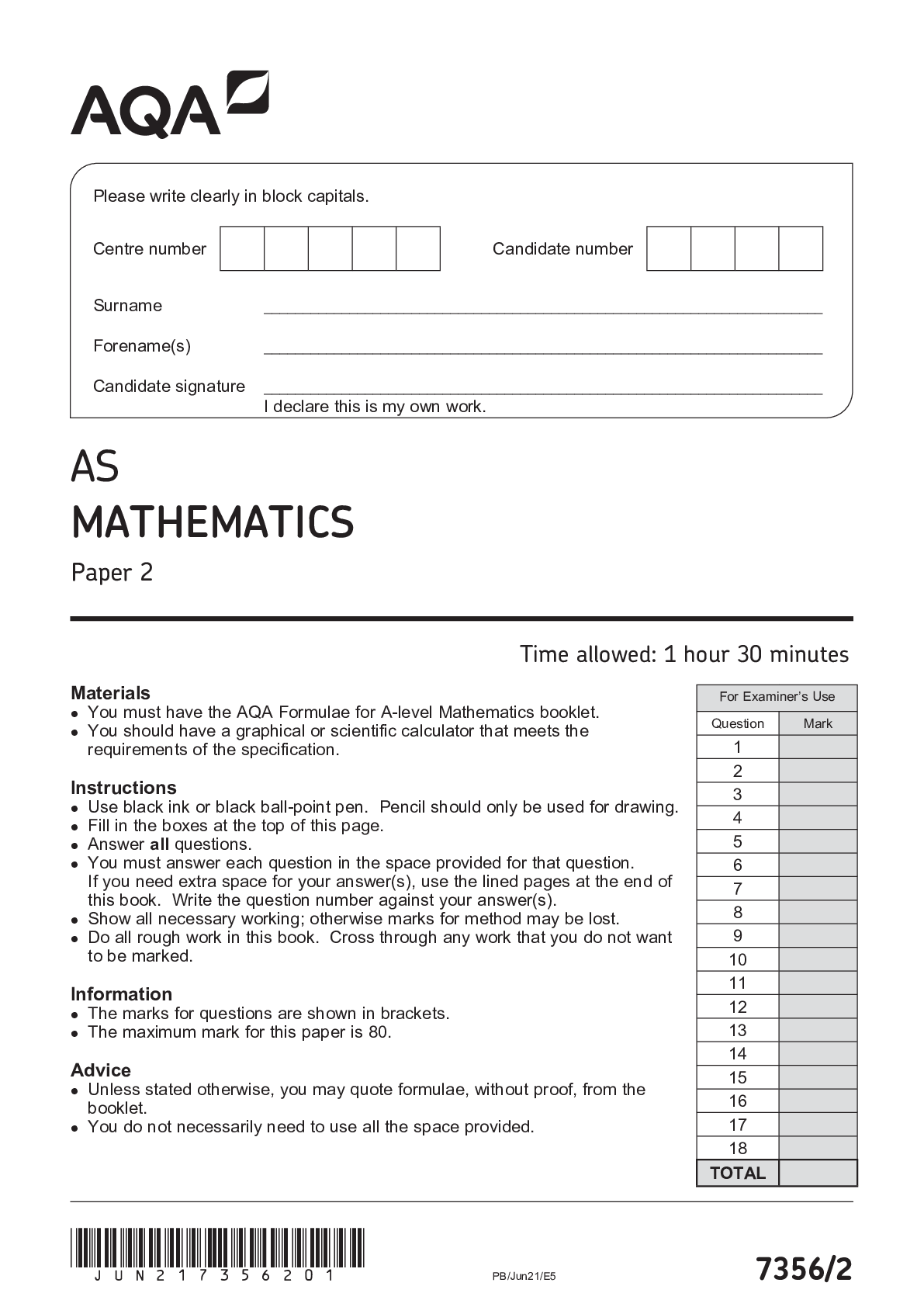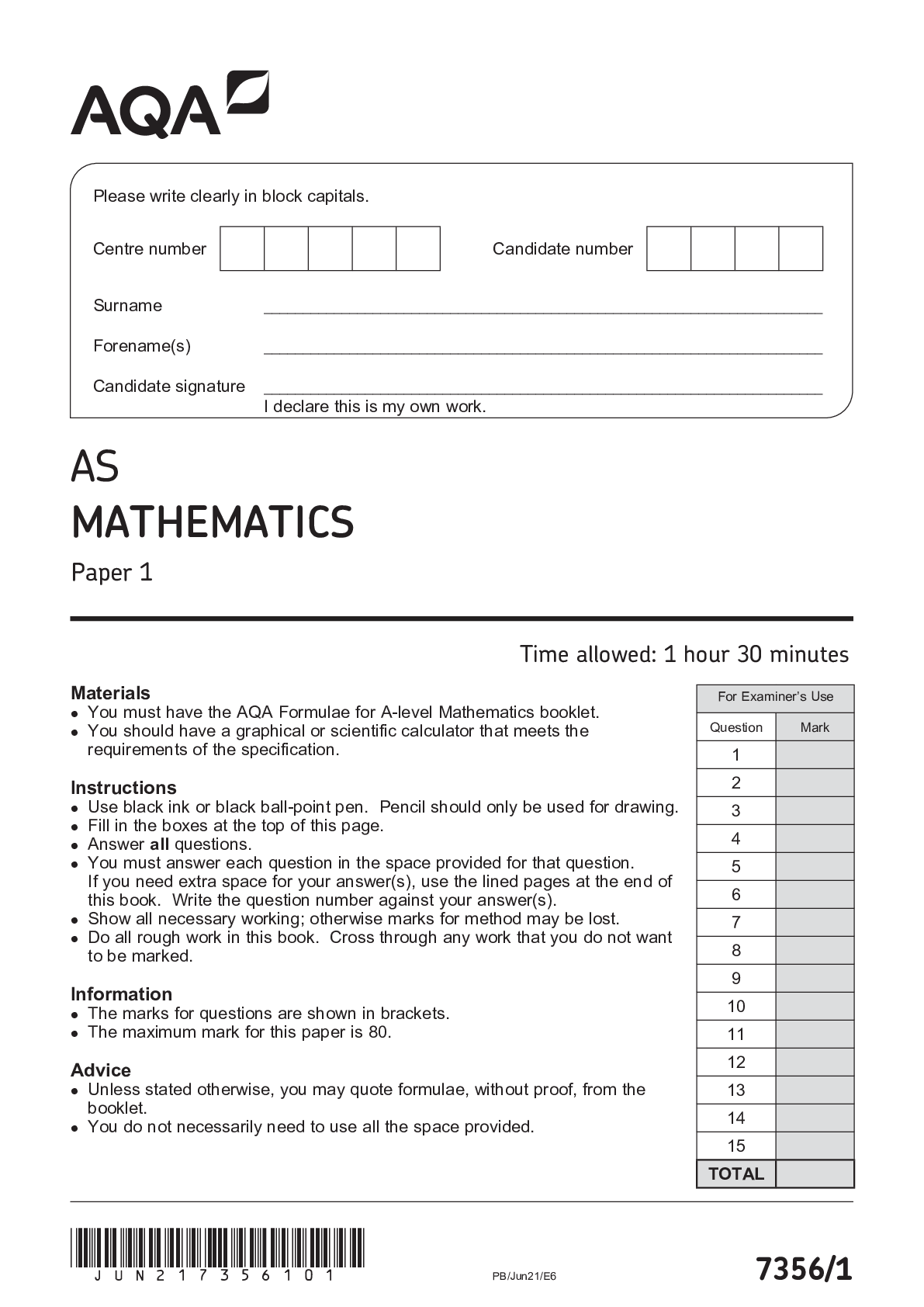OCR Interchange October 2021 A Level Physics/ H556/02 Exploring physics
Document Content and Description Below
October 2021 A Level Physics A H556/02 Exploring physics Time allowed: 2 hours 15 minutes * H 5 5 6 0 2 * INSTRUCTIONS • Use black ink. You can use an HB... pencil, but only for graphs and diagrams. • Write your answer to each question in the space provided. If you need extra space use the lined pages at the end of this booklet. The question numbers must be clearly shown. • Answer all the questions. • Where appropriate, your answer should be supported with working. Marks might be given for using a correct method, even if your answer is wrong. INFORMATION • The total mark for this paper is 100. • The marks for each question are shown in brackets [ ]. • Quality of extended responses will be assessed in questions marked with an asterisk (*). • This document has 32 pages. ADVICE • Read each question carefully before you start your answer. SECTION A You should spend a maximum of 30 minutes on this section. Write your answer to each question in the box provided. Answer all the questions. 1 Faraday’s law of electromagnetic induction is written below with two terms missing. The ...................................... induced in a circuit is directly proportional to the rate of change of magnetic flux ...................................... . What are the two missing terms? A current, density B current, linkage C electromotive force, density D electromotive force, linkage Your answer [1] 2 Monochromatic light from a laser is incident normally on a diffraction grating. A series of bright dots are formed on a distant screen. Which two terms can be used to explain these bright dots? A diffraction, interference B reflection, interference C refraction, diffraction D refraction, reflection Your answer [1] 3 The current in a lamp is 2.0 mA. The potential difference across the lamp is 6.0 V. What is the energy transfer in the lamp over a period of 3.0 hours? A 0.012 J B 0.036 J C 2.16 J D 130 J Your answer [1] 4 The diagram below shows two oppositely charged spheres. P The magnitude of the charge on each sphere is the same. The point P is on the line joining the centres of the spheres and is the same distance from the centre of each sphere. Which statement is correct? A A negatively charged particle at P will move to the right. B The direction of the electric field at P is to the left. C The electric potential at P is zero. D The magnitude of the electric field strength at P is zero. Your answer [1] 5 A circuit with four light-emitting diodes (LEDs) P, Q, R and S is shown below. Two LEDs are lit in this circuit. Which two LEDs are lit? A P and Q B P and R C Q and R D Q and S Your answer [1] 6 A student is modelling the decay of charge for a capacitor discharging through a resistor using the equation ∆Q ∆t = – 0.2Q. The student decides to use ∆t = 0.5 s. The initial charge on the capacitor is 1000 µC. Part of the modelling spreadsheet from the student is shown below. t / s Charge Q left on capacitor at time t / µC Charge ∆Q decaying in the next 0.5 s / µC 0 1000 100 0.5 900 1.0 1.5 What is the value of Q in µC at t = 1.5 s? A 700 B 720 C 729 D 800 Your answer [1] 7 A circuit with a thermistor is shown below. + – The resistance of the resistor is R and the resistance of the thermistor is 2.5R. The potential difference (p.d.) across the thermistor is 5.0 V. What is the total p.d. across both components? A 2.0 V B 7.0 V C 12.5 V D 17.5 V Your answer [1] 8 A double-slit is used in an interference experiment to independently investigate the light from two sources K and L. The light from the sources have different wavelengths. The table below shows some data. Light source Wavelength of light Separation between adjacent bright fringes Distance between screen and double‑slit K λ 1.2 mm D L 0.80λ 0.50D What is the separation between adjacent bright fringes for source L? A 0.48 mm B 1.2 mm C 1.9 mm D 3.0 mm Your answer [1] 9 A stationary sound wave formed in a tube is shown below. The tube is closed at one end. The length of the tube is 3.5 m. The speed of sound is 340 m s–1. What is the frequency of the sound wave? A 97 Hz B 120 Hz C 240 Hz D 486 Hz Your answer [1] 10 A battery of electromotive force (e.m.f) 6.0 V and of negligible internal resistance is used in the circuit below. 30 mA 6.0 V 10 mA Y X Z The current from the battery is 30 mA. The current in the resistor X is 10 mA. The resistors Y and Z are identical. What is the power dissipated in the resistor Z? A 30 mW B 60 mW C 120 mW D 180 mW Your answer [1] 11 The diagram below shows the graphs of displacement x against time t for two waves S and T. 3.0 2.0 x / mm 1.0 0 – 1.0 – 2.0 – 3.0 The waves meet at a point in space. The superposition of these two waves produces a resultant wave. What is the frequency f and the amplitude A of the resultant wave? A f = 100 Hz, A = 2.0 mm B f = 100 Hz, A = 4.0 mm C f = 200 Hz, A = 2.0 mm D f = 200 Hz, A = 4.0 mm Your answer [1] 12 A flat coil has 200 turns and a cross-sectional area of 1.20 × 10–4 m2. gnetic ld line The coil is placed horizontally in a uniform magnetic field. The magnetic flux density is 0.050 T. The magnetic field is at an angle of 30.0° to the vertical. What is the magnetic flux linkage for this coil? A 3.00 × 10–6 Wb B 5.20 × 10–6 Wb C 6.00 × 10–4 Wb D 1.04 × 10–3 Wb Your answer [1] 13 The nucleus of thorium-232 ( 232Th) emits two alpha particles and two beta-minus particles to become a nucleus of an isotope of radium. What is the nucleon number A and the proton number Z for the nucleus of this radium isotope? A A = 224, Z = 88 B A = 228, Z = 86 C A = 224, Z = 84 D A = 228, Z = 88 Your answer [1] 14 A beam of ultrasound is incident normally at a boundary between two tissues F and G. The table below shows some data on the two tissues. Tissue F Tissue G Density of tissue ρ 1.2ρ Speed of ultrasound in tissue c 1.5c What percentage of the intensity of the ultrasound is reflected at the boundary? A 0.83% B 8.2% C 9.1% D 29% Your answer [1] 15 A radiation detector is placed in front of a beta-emitting source. The count-rate is measured and recorded every 10 minutes. The results are shown below. 311 s–1 309 s–1 299 s–1 307 s–1 321 s–1 What term can be used to describe the data shown? A exponential B linear C random D spontaneous Your answer [1] SECTION B Answer all the questions. 16 (a) The normal frequency range of hearing for young people is from 20 Hz to 20 kHz. (i) The speed of sound in air is 340 m s–1. Calculate the shortest wavelength a young person can hear. wavelength = m [2] (ii) Describe how you can use an oscilloscope, and other additional laboratory equipment, to determine the actual upper limit of the frequency range for a young person. ........................................................................................................................................... ........................................................................................................................................... ........................................................................................................................................... ........................................................................................................................................... ........................................................................................................................................... ........................................................................................................................................... ...................................................................................................................................... [3] (b) State one difference and one similarity between the oscillations of a stationary sound wave and a progressive sound wave. Difference: ................................................................................................................................ ................................................................................................................................................... Similarity: .................................................................................................................................. ................................................................................................................................................... [2] (c) You are provided with a ray-box, a semi-circular block of plastic and other normal laboratory equipment. The outline of the block is shown below. block Describe how you could measure the refractive index n of the block using the critical angle method. Draw on the diagram and label it to make your answer clear. ................................................................................................................................................... ................................................................................................................................................... ................................................................................................................................................... ................................................................................................................................................... ................................................................................................................................................... ................................................................................................................................................... .............................................................................................................................................. [3] 17 (a) Define the work function of a metal. ................................................................................................................................................... .............................................................................................................................................. [1] (b) The work function of potassium is 2.3 eV. (i) Potassium emits electrons from its surface when blue light is incident on it. Extremely intense red light produces no electrons. Explain these observations in terms of photons and their energy. ........................................................................................................................................... ........................................................................................................................................... ........................................................................................................................................... ........................................................................................................................................... ........................................................................................................................................... ........................................................................................................................................... ........................................................................................................................................... ...................................................................................................................................... [4] (ii) Light from a laser is incident on some potassium in a vacuum. Electrons are emitted. The wavelength of the light is 320 nm. Calculate the shortest de Broglie wavelength of the emitted electrons. de Broglie wavelength = m [4] 18 (a) The circuit diagram of an electrical circuit is shown below. S R The positive terminals of the batteries are connected together. One battery has electromotive force (e.m.f.) 4.5 V and internal resistance 0.80 Ω. The other battery has e.m.f. 2.4 V and internal resistance 0.50 Ω. R is a coil of insulated wire of resistance 1.2 Ω at room temperature. The switch S is closed. (i) On the diagram, draw an arrow to show the direction of the conventional current. [1] (ii) Calculate the current I shown by the ammeter. I = A [3] (iii) The insulated wire has diameter 4.6 × 10–4 m. The number density of charge carriers in R is 4.2 × 1028 m–3. Calculate the mean drift velocity v of the charge carriers in R. v = m s–1 [2] (iv) The current measured by the ammeter is smaller than that calculated in (ii). This is because the temperature of R increased due to heating by the current. Without any changes to the circuit itself, state and explain what practically can be done to make the measured current the same as the calculated current.. ........................................................................................................................................... ........................................................................................................................................... ...................................................................................................................................... [2] (b)* A student is doing an experiment to determine the e.m.f. E of a cell and its internal resistance r. The circuit diagram of the arrangement is shown below. The student changes the resistance of the variable resistor. The potential difference V across the variable resistor and the current I in the circuit are measured. The V against I graph plotted by the student is shown below. 1.5 V / V 1.0 0.5 0 0 0.5 1.0 I /A 1.5 There is an incomplete table next to the graph. R is the resistance of the variable resistor and P is the power dissipated by the variable resistor. • Use the graph to determine E and r. Explain your reasoning. • Calculate R and P to complete the table. Describe how P depends on R. [6] ................................................................................................................................................... ................................................................................................................................................... ................................................................................................................................................... ................................................................................................................................................... ................................................................................................................................................... ................................................................................................................................................... ................................................................................................................................................... ................................................................................................................................................... ................................................................................................................................................... ................................................................................................................................................... ................................................................................................................................................... ................................................................................................................................................... ................................................................................................................................................... ................................................................................................................................................... ................................................................................................................................................... Additional answer space if required ................................................................................................................................................... ................................................................................................................................................... ................................................................................................................................................... ................................................................................................................................................... ................................................................................................................................................... ................................................................................................................................................... ................................................................................................................................................... ................................................................................................................................................... 19 (a) The diagram below shows the top-view of a long current-carrying wire. wire The direction of the current in the wire is into the plane of the paper. Draw at least three field lines to indicate the magnetic field pattern around this wire. [2] (b) The arrangement shown in the diagram below is used to determine the magnetic flux density between the poles of a permanent magnet. magnet I S I N top view bench current-carrying wire digital balance The magnet is placed on the digital balance. The current-carrying wire is horizontal and at right angles to the magnetic field between the poles of the magnet. The wire is fixed. The following results are collected. • length of the wire in the uniform field of the magnet = 6.0 ± 0.2 cm • balance reading with no current in wire = 80.0 g • balance reading with current in wire = 82.2 g • current in wire = 5.0 ± 0.1A Calculate the magnetic flux density B, including the absolute uncertainty. Ignore the absolute uncertainty in the balance readings. Write your value for B to 2 significant figures and the absolute uncertainty to 1 significant figure. B = ................................... ± T [4] 20 (a) The diagram below shows a circuit to charge a capacitor. 1.48 V The electromotive force (e.m.f.) E of the cell is 1.48 V and it has negligible internal resistance. The resistance of the resistor is 120 kΩ and the capacitance of the capacitor is 2000 µF. At time t = 0 the capacitor is uncharged. The switch is closed at time t = 0. Calculate the time t when the potential difference across the capacitor is 1.00 V. t = s [4] (b) A capacitor of capacitance C is connected across a strip of conductive paper. 6.00 V conductive paper The switch is moved from X to Y, and the time t for the potential difference across the capacitor to halve is measured. The time t is given by the expression t = (Ck ln2) × L where k is the resistance of the conductive paper per unit length and L is the length of the conductive paper. The value of C is 1.2 × 10–3 F. In an experiment, L is changed and t measured. The data points are plotted on a t against L grid as shown below. 20 t / s 10 0 0.1 0.2 0.3 0.4 0.5 0.6 L / m Draw a straight line of best fit through the data points, and use the gradient of this line to determine k. k = Ω m–1 [4] 21 (a) A high-energy X-ray photon interacts with an electron of an atom through the Compton effect. Describe this effect. ................................................................................................................................................... ................................................................................................................................................... ................................................................................................................................................... .............................................................................................................................................. [2] (b) The diagram below shows a beam of X-rays incident normally on some soft tissue. soft tissue cyst The attenuation (absorption) constant of the soft tissue is 0.85 cm–1. The intensity of the beam is 4.6 × 103 W m–2. There is a small cyst 2.1 cm from the surface of the soft tissue. The cross-sectional area of the cyst normal to the beam is 3.4 × 10–4 m2. The beam is switched on for 30 s. Calculate the X-ray energy incident on the cyst in a period of 30 s. energy = J [4] (c) The attenuation coefficients of the cyst and the soft tissues in (b) were similar. This prevented imaging the cyst using a two-dimensional X-ray image. Name a different X-ray technique that could be used to image the cyst. Explain the advantage of this technique. ................................................................................................................................................... ................................................................................................................................................... .............................................................................................................................................. [2] 22 The medical tracer fluorine-18 is used in positron emission tomography (PET). Fluorine-18 is a beta-plus emitter with a short half-life. Describe how the fluorine-18 nuclei are located in a patient using a PET scanner. .......................................................................................................................................................... .......................................................................................................................................................... .......................................................................................................................................................... .......................................................................................................................................................... .......................................................................................................................................................... .......................................................................................................................................................... .......................................................................................................................................................... .......................................................................................................................................................... .......................................................................................................................................................... ..................................................................................................................................................... [4] 23 (a) Explain the function of the control rods and the moderator in a nuclear fission reactor. ................................................................................................................................................... ................................................................................................................................................... ................................................................................................................................................... ................................................................................................................................................... .............................................................................................................................................. [2] (b) * Some nuclear fission reactors use uranium-235 as fuel. In the future, there is possibility of using hydrogen-2 as fuel in fusion reactors. Here is some information and data on fission and fusion reactions. Fission reactor Fusion reactor Typical reaction 1n + 235U 144Ba + 89Kr + 31n 2H + 2H 3H + 1H 0 92 56 36 0 1 1 1 1 Approximate energy produced in each reaction 200 MeV 4 MeV Molar mass of fuel material uranium-235: 0.235 kg mol–1 hydrogen-2: 0.002 kg mol–1 • Describe the similarities and the differences between fission and fusion reactions. • Explain with the help of calculations, which fuel produces more energy per kilogram. [6] ................................................................................................................................................... ................................................................................................................................................... ................................................................................................................................................... ................................................................................................................................................... ................................................................................................................................................... ................................................................................................................................................... ................................................................................................................................................... ................................................................................................................................................... ................................................................................................................................................... ................................................................................................................................................... ................................................................................................................................................... ................................................................................................................................................... ................................................................................................................................................... ................................................................................................................................................... ................................................................................................................................................... Additional answer space if required ................................................................................................................................................... ................................................................................................................................................... ................................................................................................................................................... ................................................................................................................................................... ................................................................................................................................................... ................................................................................................................................................... ................................................................................................................................................... ................................................................................................................................................... 24 (a) Fig. 24 shows two horizontal metal plates in a vacuum. Fig. 24 The diagram is not drawn to scale. Electrons travelling horizontally enter the space between the charged plates and are deflected vertically. The potential difference between the plates is 4000 V. The distance between the plates is 0.08 m. The initial speed of the electrons is 6.0 × 107 m s–1. The vertical deflection of the electrons at the far end of the plates is x. (i) Show that the vertical acceleration a of an electron between the plates is 8.8 × 1015 m s–2. [3] (ii) The length of each plate is 0.12 m. Show that the time t taken by the electron to travel this length is 2.0 × 10–9 s. [1] (iii) Calculate the vertical deflection x of the electron. x = m [2] (b) The arrangement shown in Fig. 24 is now used to investigate positrons emitted from a radioactive source. The speed of the positrons is also 6.0 × 107 m s–1. The initial path of the positrons is the same as that of the electrons in Fig. 24. On Fig. 24, sketch the path of the positrons between the plates. [2] (c) Beta-minus particles (electrons) emitted from a radioactive source have a range of speeds. Describe and explain how a uniform magnetic field can be applied in the space between the charged plates to select beta-minus particles with a specific speed. No calculations are required. ................................................................................................................................................... ................................................................................................................................................... ................................................................................................................................................... ................................................................................................................................................... ................................................................................................................................................... ................................................................................................................................................... ................................................................................................................................................... ................................................................................................................................................... ................................................................................................................................................... ................................................................................................................................................... ................................................................................................................................................... .............................................................................................................................................. [3] 25 (a) A researcher is doing an experiment on a radioactive solution in a thin glass tube. The solution has two radioactive materials X and Y. The table below shows some data on these two materials. Material X Material Y Half-life 10 minutes 10 hours Particles emitted Alpha Beta-minus Daughter nuclei Stable Stable The solution has the same number of nuclei of X and Y at the start. (i) State and explain which material has the greatest activity at the start. ........................................................................................................................................... ...................................................................................................................................... [1] (ii) State why it is dangerous for the researcher to handle the test tube with bare hands. ........................................................................................................................................... ...................................................................................................................................... [1] (b) Carbon-14 ( 14C) is produced in the upper atmosphere of the Earth by collisions between nitrogen nuclei and fast-moving neutrons. The nuclear transformation equation below shows the formation of a single carbon-14 nucleus. 14N + 1n 14C + X 7 0 6 (i) State the proton number of particle X. proton number = [1] (ii) Use the data below to determine the binding energy per nucleon of the 14C nucleus. Write your answer to 3 significant figures. • mass of neutron = 1.675 × 10–27 kg • mass of proton = 1.673 × 10–27 kg • mass of 14C nucleus = 14.000 u • 1 u = 1.66 × 10–27 kg binding energy per nucleon = J per nucleon [4] END OF QUESTION PAPER © OCR 2021 ADDITIONAL ANSWER SPACE If additional space is required, you should use the following lined page(s). The question number(s) must be clearly shown in the margin(s). .................................................................................................................................................................. .................................................................................................................................................................. .................................................................................................................................................................. .................................................................................................................................................................. .................................................................................................................................................................. .................................................................................................................................................................. .................................................................................................................................................................. .................................................................................................................................................................. .................................................................................................................................................................. .................................................................................................................................................................. .................................................................................................................................................................. .................................................................................................................................................................. .................................................................................................................................................................. .................................................................................................................................................................. .................................................................................................................................................................. .................................................................................................................................................................. .................................................................................................................................................................. .................................................................................................................................................................. .................................................................................................................................................................. .................................................................................................................................................................. [Show More]
Last updated: 1 year ago
Preview 1 out of 32 pages
.png)
Also available in bundle (1)
.png)
OCR Interchange A Level Physics Question Papers and Mark Schemes October 2021
OCR Interchange A Level Physics Question Papers and Mark Schemes October 2021
By Axeldee 2 years ago
$45
8
Reviews( 0 )
Document information
Connected school, study & course
About the document
Uploaded On
Feb 26, 2022
Number of pages
32
Written in
Additional information
This document has been written for:
Uploaded
Feb 26, 2022
Downloads
0
Views
170

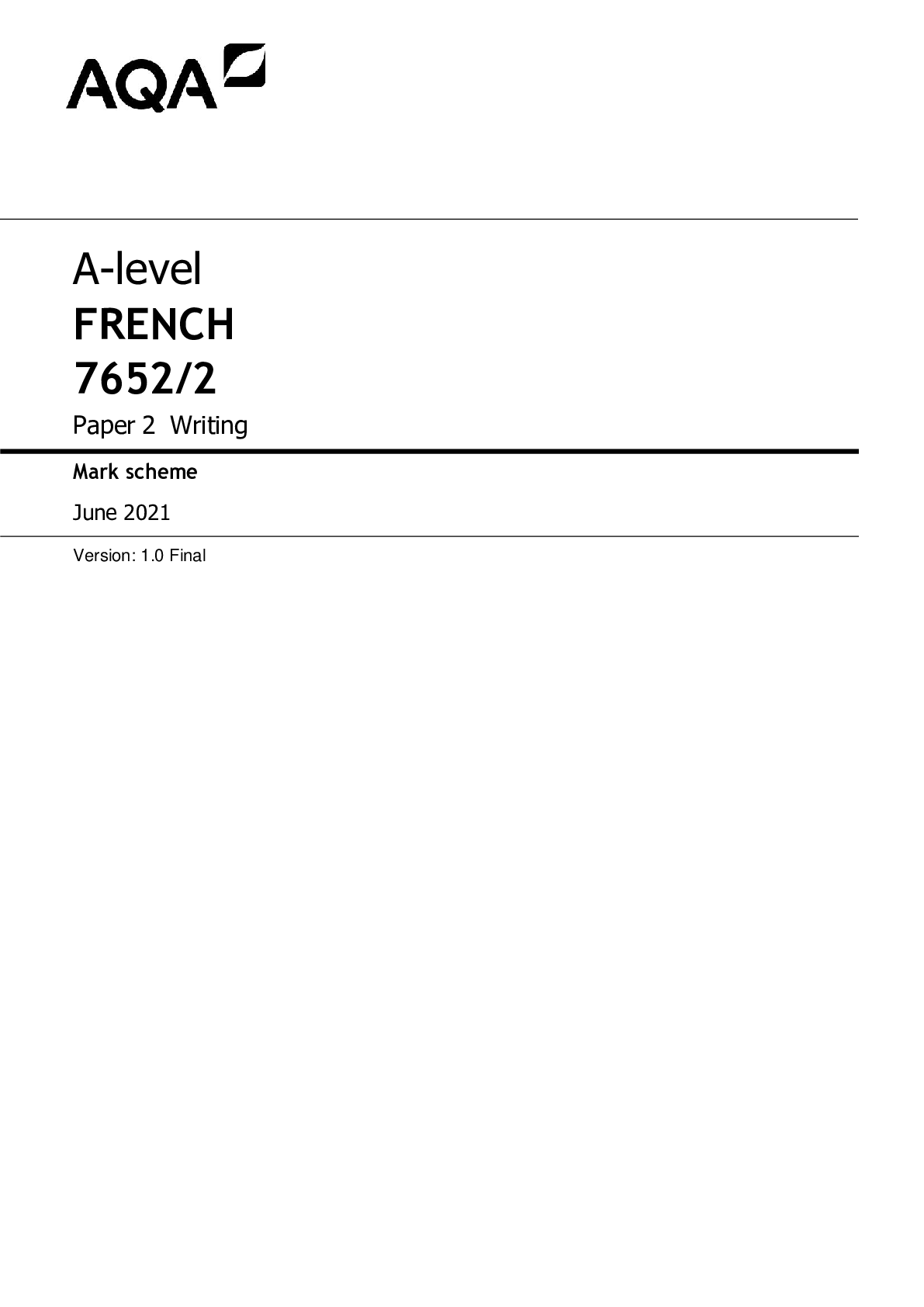
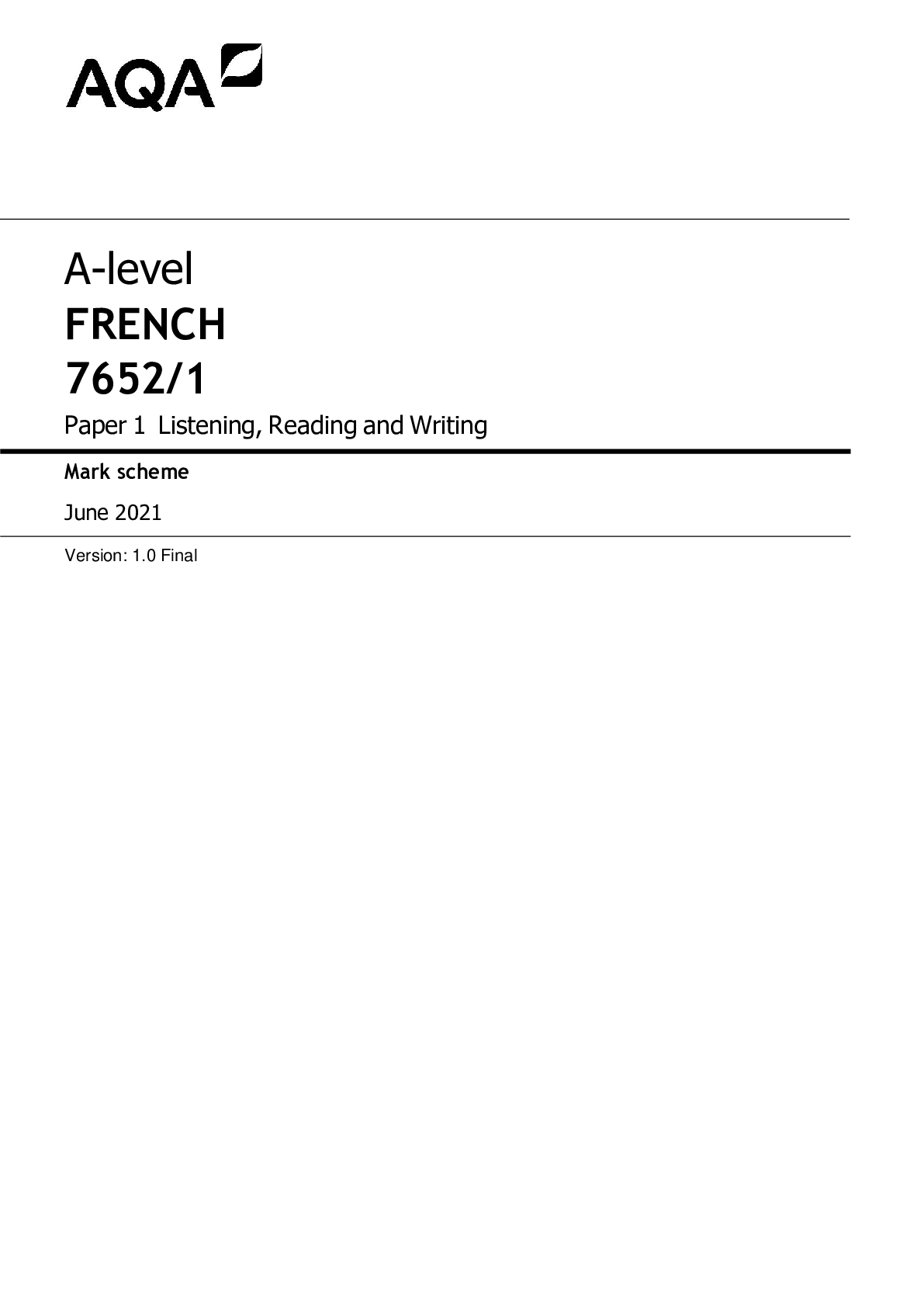
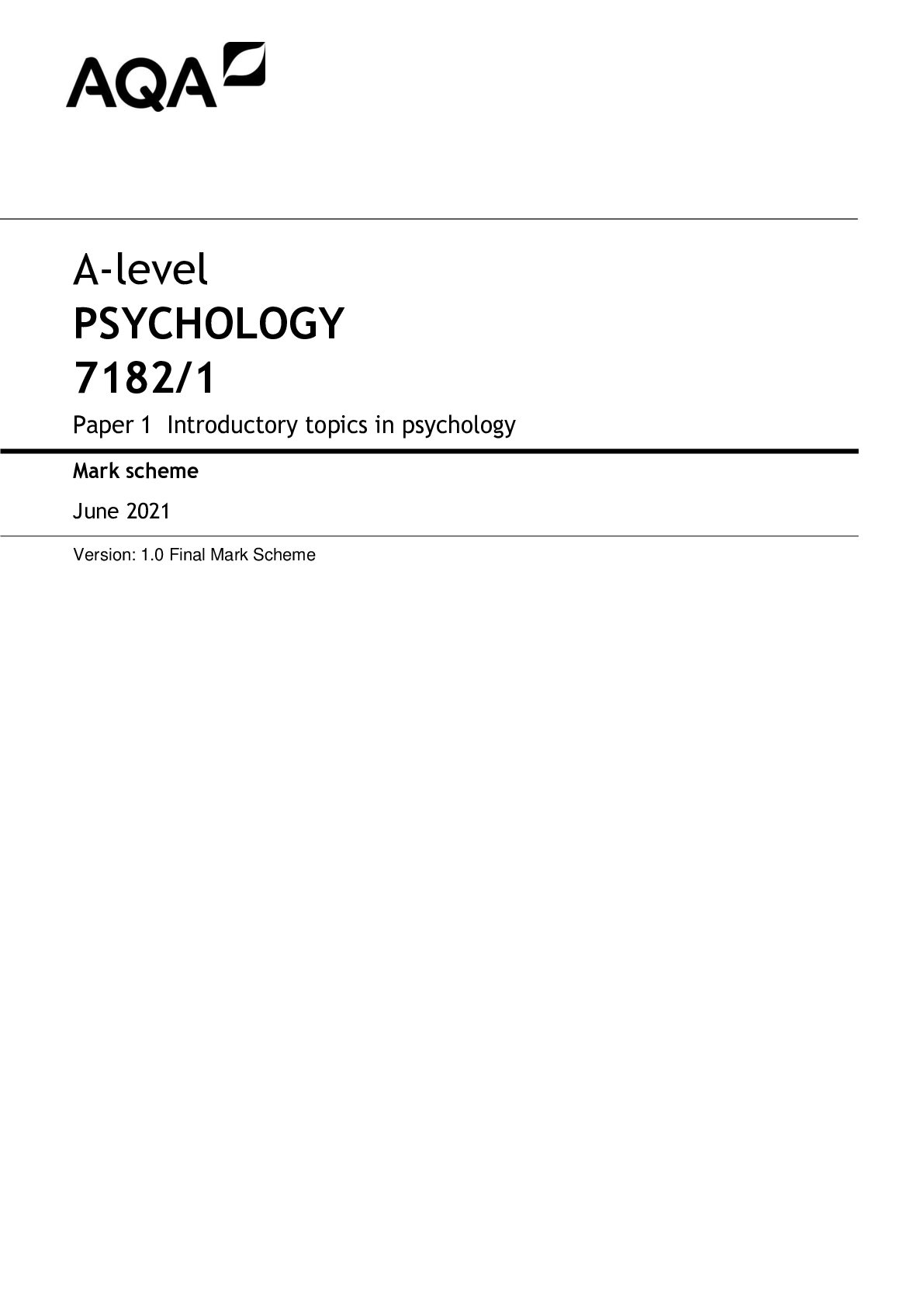



 (1).png)
 (1).png)
 (1).png)
 (1).png)
.png)
.png)
 (1).png)
.png)
.png)
.png)
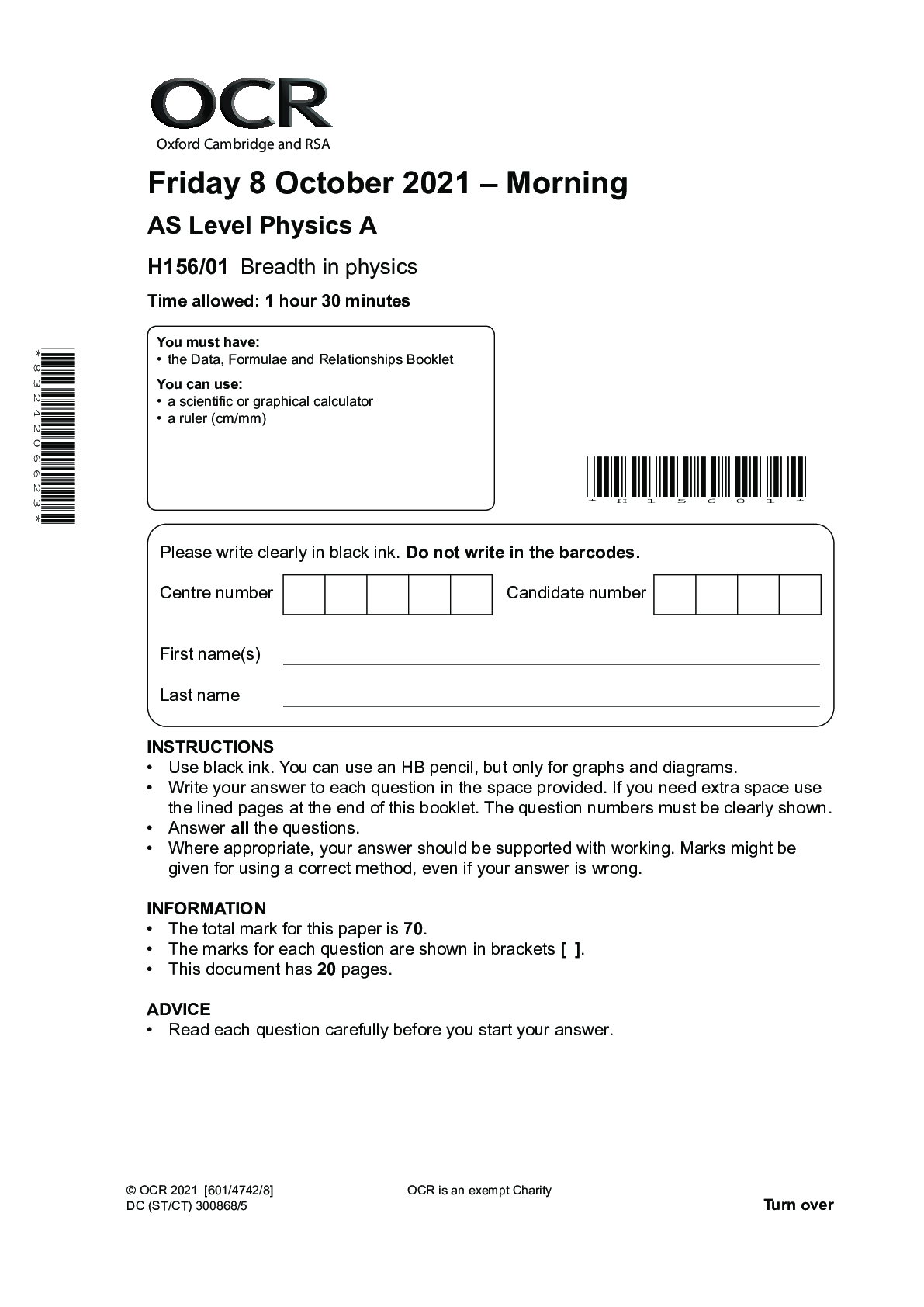
.png)
.png)
.png)



